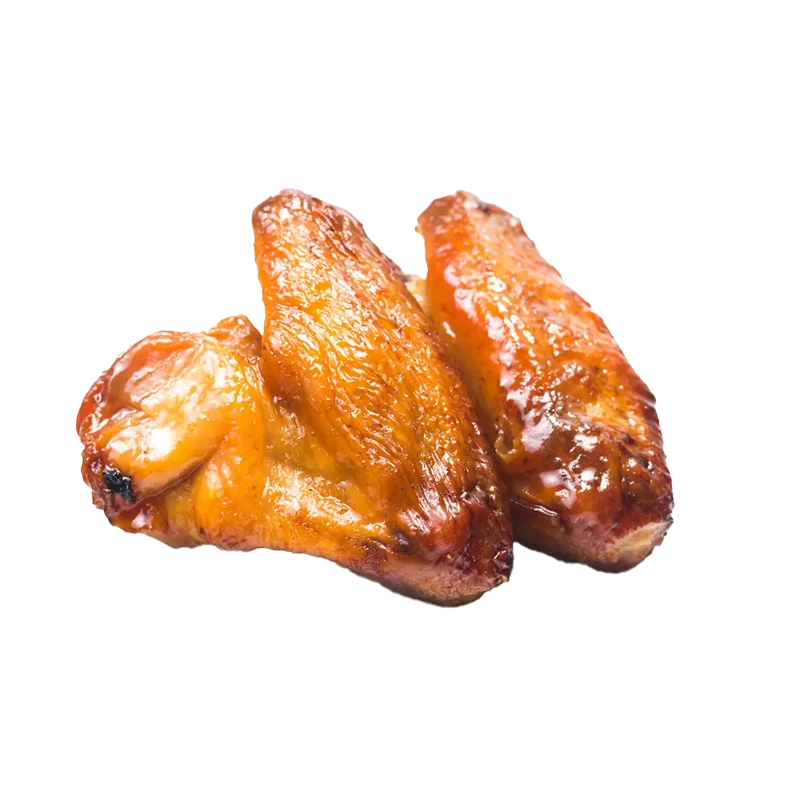Wings — Nutrients, Health Benefits, And Shopping Tips

Written by Listonic Team
Last update on September 4, 2024
Wings nutrients
Nutrition facts
Amount per 100 g
Calories
🔥 203 kcal
| Nutrition per: 100 g | Value | % Daily Value* |
|---|---|---|
| Carbs | 0 g | - |
| Fiber | 0 g | - |
| Sugars | 0 g | - |
| Glycemic Index | 0 | - |
| Protein | 31 g | 62% |
| Sodium | 87 mg | 3.78% |
| Total Fat | 8 g | 10.26% |
*The % of Daily Value (DV) tells you how much a nutrient in a serving of food contributes to a daily diet. 2,000 calories a day is used for general nutrition advice.
31 g
💪 High Protein Content
Wings facts & tips
Health benefits
- Rich in protein, essential for muscle growth, repair, and overall body function.
- Contains essential vitamins and minerals such as B vitamins, selenium, and phosphorus, which support overall health and well-being.
- Versatile in cooking, allowing for various flavors and preparation methods such as baking, grilling, or frying.
- Provides healthy fats (when skin is included), which support cell function and provide energy.
- Encourages social interaction when shared during gatherings and parties, promoting social bonding.
Health risks
- High fat content particularly in wings with skin on, which can raise cholesterol levels and increase the risk of heart disease when consumed frequently.
- High calorie content especially when wings are fried or served with high-calorie sauces, which can contribute to weight gain if consumed frequently.
- High sodium content particularly in pre-seasoned or sauce-covered wings, which can contribute to hypertension and increased cardiovascular risks.
- Risk of contamination with harmful bacteria such as Salmonella or Campylobacter, particularly if the wings are not properly cooked or stored.
How to choose wings
Chicken wings should be plump and meaty, with a smooth skin that is free from blemishes. The skin should crisp up well when cooked, providing a satisfying contrast to the tender meat within.
Avoid wings that are discolored or have a sour smell, as these are signs they are not fresh. Wings that feel sticky or are overly fatty should also be avoided, as they may not cook well or taste good.

How to store wings
Fresh wings should be stored in the refrigerator, tightly wrapped in plastic wrap or butcher paper. Refrigeration maintains their freshness for up to two days. Freezing is recommended for longer storage.
Air exposure can lead to rapid spoilage. Avoid leaving them uncovered or near ready-to-eat foods to prevent cross-contamination. Always thaw frozen wings in the refrigerator and cook promptly to ensure safety and optimal flavor.
✅ Extra Tip
How long do they last?
Wings can last for 1-2 days in the refrigerator. For longer storage, wings can be frozen for up to 6-9 months.
What to do with leftovers?
Leftover wings can be used in a variety of savory and hearty dishes. Shred the meat and add it to tacos, sandwiches, or wraps for a flavorful filling, or mix it into a stir-fry with vegetables and rice. Wings are also great when added to pasta dishes with a tomato or barbecue sauce, where their smoky flavor enhances the dish.
Use the shredded wing meat in a casserole with beans, cheese, and spices, or mix it into a chili or stew for added richness and flavor. If you have a lot of wing meat, consider making a batch of pulled chicken sliders with coleslaw and pickles, or using it as a topping for pizzas or nachos. Wing meat can also be mixed into a barbecue mac and cheese for a comforting meal. For a quick snack, reheat the wing meat and serve it with a dipping sauce or on a bed of greens.
👨⚕️️ Medical disclaimer
Discover products from other categories
Listonic Team
Fact-checked
Our editorial team checked this article to make sure it was accurate at the time of publishing it.
Get the top-rated shopping list app

wings
1 piece







